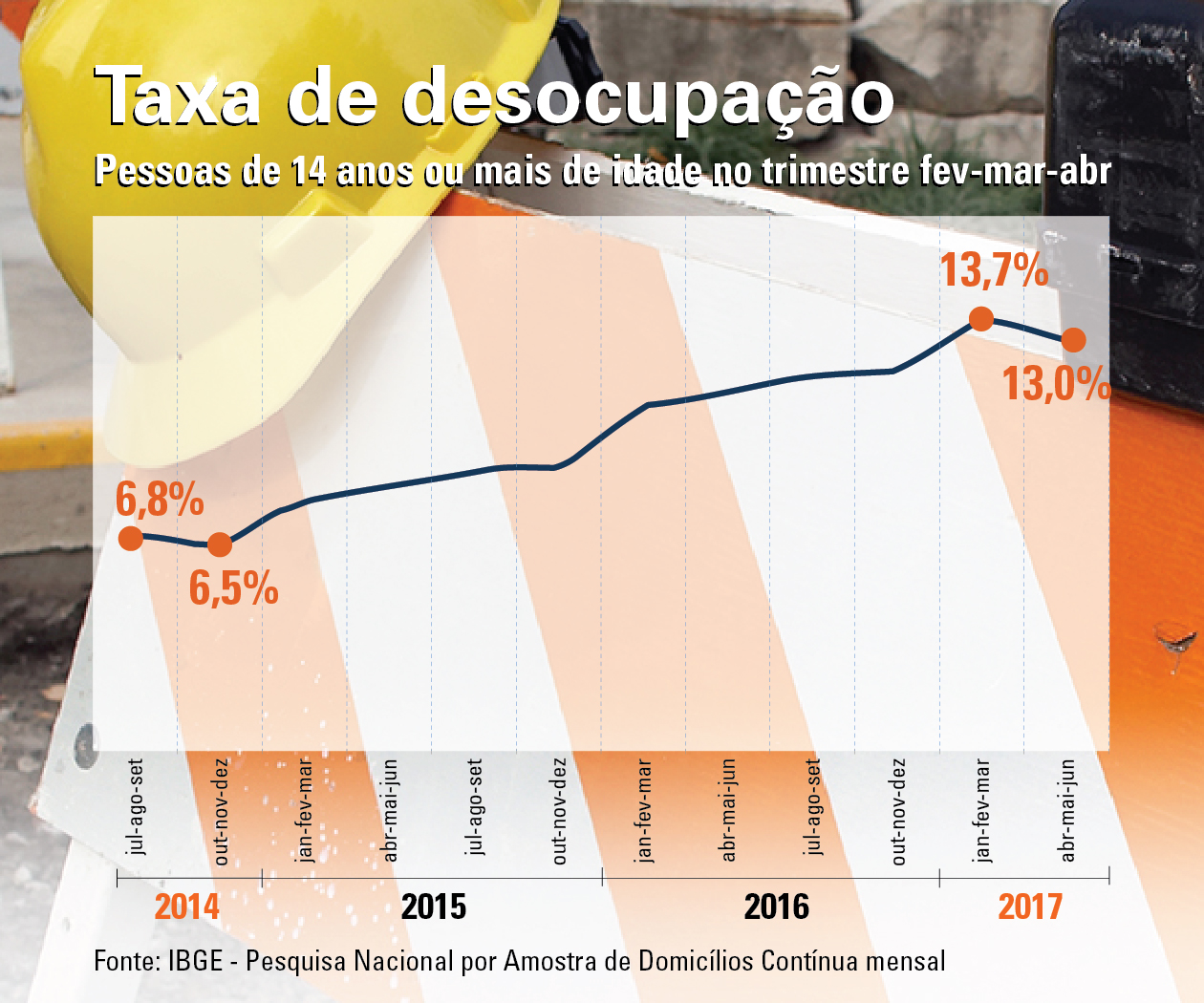Unemployment rate, first drop since 2014
July 28, 2017 09h00 AM | Last Updated: September 04, 2017 09h21 AM
Registering an unemployment rate of 13.0% in the second quarter of 2017, the Continuous National Household Sample Survey - Continuous PNAD, recently released, pointed out the first drop since the end of 2014. It retreated 0.7 percentage points in relation to the previous quarter (January-March 2017).

Cimar Azeredo, the IBGE´s coordinator of Labor and Income, explains that "the rate declined, increasing the employed population and dropping the number of unemployed persons. Unfortunately, employment rose on the informal side, i.e., there are more persons either without a formal contract or self-employed, who do not have formal jobs".
Cimar reminded that Industry and Transportation were the groups of activity in which employment increased. According to him, "industry grew mainly due to the food industry, based on informal jobs. In transportation, the rise was a result of the increase in the number of professional drivers".
The last reduction in the unemployment rate took place between the third and fourth quarters of 2014: a drop from 6.8% to 6.5%. Since then, the rate continuously increased and the labor market in Brazil worsened.
In the October-December 2014 quarter, the unemployed population comprised 6.5 million persons. This figure more than doubled since then, reaching its peak in the January-March 2017 quarter: 14.2 million persons. This figure retreated 4.9% in the last edition of the Continuous PNAD, which represented less 690 thousand persons looking for a job. Nevertheless, Brazil still has 13.5 million unemployed persons in the second quarter of 2017.
The IBGE survey also showed that 33.3 million persons were employed with a formal contract in the second quarter (April-June) of 2017. This contingent remained stable in relation to the first quarter of 2017, yet standing 3.2% below that in the same quarter of 2016. This means that Brazil lost 1.1 million jobs with formal contracts within a year.
However, the comparison between the current data and those in the last quarter of 2014, when Brazil had 36.5 million employed persons with a formal contract, shows a much bigger drop: less 3.2 million formal jobs in the Brazilian labor market. "The market reacts to a picture of 2017. Looking at the past, we see how much we still have to go to recompose what was lost since the beginning of the crisis", concluded Azeredo.
Text: Luiz Bello
Image: Simone Mello / Gettyimages



















